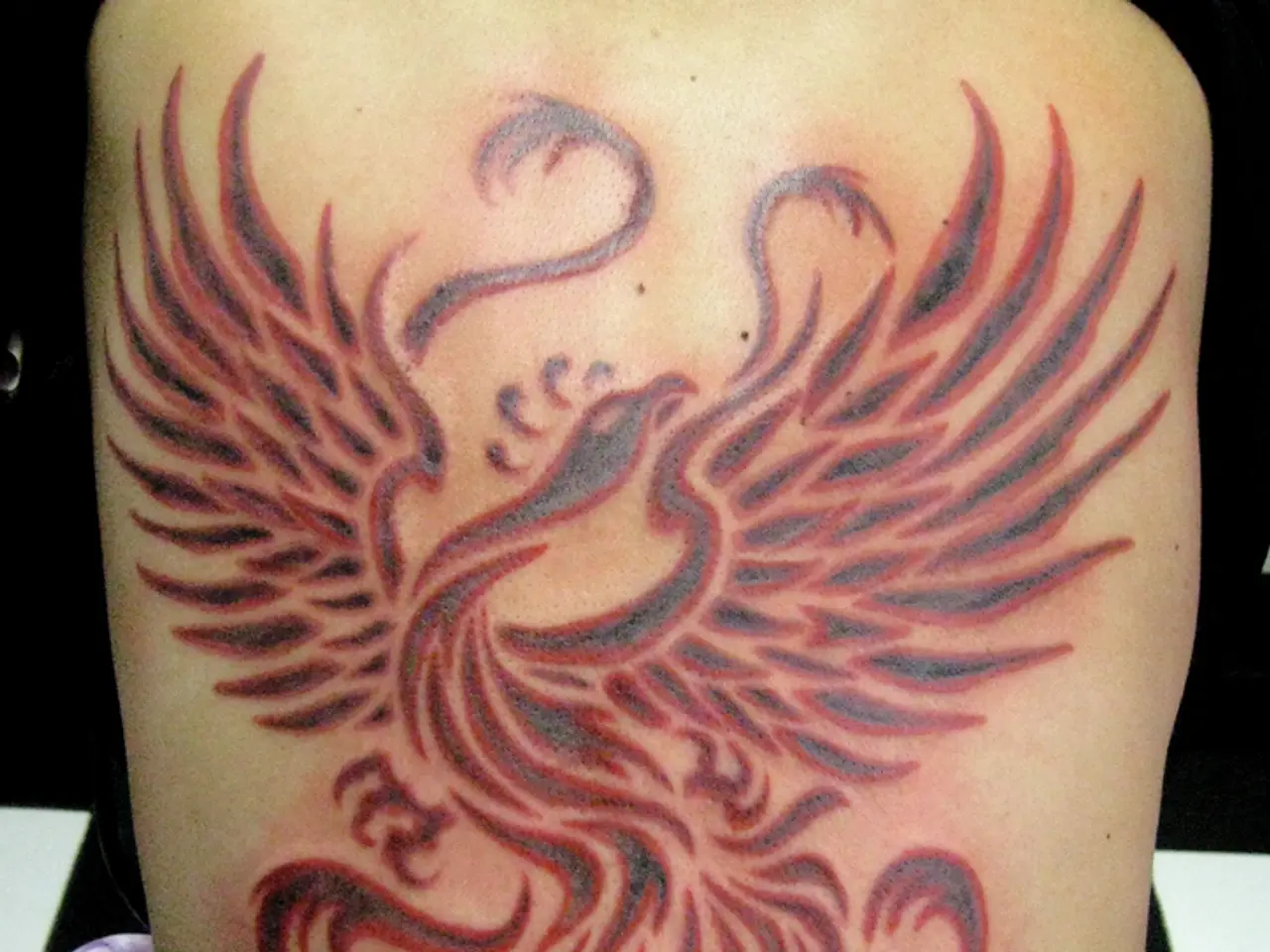Tattoos and Diabetes Type 1: Safety Concerns, Medic Alert Ink, and Related Info
People with type 1 diabetes who wish to get a tattoo should exercise extra caution, particularly when it comes to aftercare and infection prevention.
It is essential to maintain good hygiene practices, keeping the tattooed area scrupulously clean and following the tattooist's aftercare instructions. Those with type 1 diabetes are more prone to skin infections, so taking these precautions is crucial.
Before getting inked, it's vital to ensure that the tattoo shop is licensed and that all needles, inks, gloves, swabs, and bandages are new and single-use. This step helps guarantee safety during the procedure.
When choosing the location for the tattoo, it's best to avoid areas where insulin injections or infusions are typically given, such as the abdomen or thighs. Instead, consider placing the tattoo on an easily accessible area, like the lower arm or wrist, to ensure that emergency medical staff can quickly identify important medical information.
If you intend to use your tattoo as a medical alert, providing information about your diabetic status, ensure the design is clear and easily visible. It's also a good idea to discuss the design with the artist and explain any significance it may hold.
People with type 1 diabetes should be aware of the potential for complications related to diabetes and skin infections before getting tattooed. The American Diabetes Association advises that those with type 1 diabetes may be more susceptible to bacterial and fungal infections.
Additionally, people with type 1 diabetes should be cautious about placing tattoos on areas with poor circulation, such as the buttocks, shins, ankles, or feet.
In the U.S., approximately 1.6 million people have type 1 diabetes, and more than a quarter of the population has at least one tattoo. Most people get tattoos as a form of self-expression, but for those with type 1 diabetes, a tattoo can also serve as a valuable medical alert.
Remember, choosing the design for a tattoo is a personal decision, but it's essential to discuss the design with the artist and follow standard safety practices to minimize the risk of infection and other complications. Different states have different laws regarding tattoos, so it's important to check the local regulations before getting inked.
[1] American Diabetes Association. (n.d.). Tattoos and Piercings. Retrieved from https://www.diabetes.org/healthy-living/medical-treatments/tattoos-and-piercings
[2] Mayo Clinic. (2021, January 25). Tattoos and body piercings: Tips for safe inking. Retrieved from https://www.mayoclinic.org/healthy-lifestyle/adult-health/in-depth/tattoos/art-20047396
[3] American Diabetes Association. (2019, August 20). Skin and Foot Care. Retrieved from https://www.diabetes.org/healthy-living/medical-treatments/skin-and-foot-care
[4] Centers for Disease Control and Prevention. (2019, September 24). Tattoo and Body Piercing Safety. Retrieved from https://www.cdc.gov/healthywater/hygiene/tattoo/index.html
[5] American Diabetes Association. (2020, September 25). Diabetes and Skin Infections. Retrieved from https://www.diabetes.org/healthy-living/medical-treatments/skin-and-foot-care/diabetes-and-skin-infections
- People with type 1 diabetes who are considering piercings and tattoos should be mindful of potential medical-conditions, particularly skin infections, as they may be more susceptible to bacterial and fungal infections due to their diabetic status.
- When deciding on the location of a tattoo, it's advisable to avoid regions with poor circulation, such as the buttocks, shins, ankles, or feet, to minimize the risk of chronic-diseases, like skin conditions.
- Maintaining good hygiene practices, fitness-and-exercise, and skin-care routines are crucial for people with type 1 diabetes, especially when it comes to the aftercare of piercings and tattoos.
- In the realm of health-and-wellness, nutrition plays a vital role in managing diabetes, and it's essential to maintain a balanced diet to prevent chronic-diseases like type-2 diabetes that could complicate the healing process post-tattoo or piercing.
- Before proceeding with piercings and tattoos, researching the tattoo shop's credentials, adhering to standard safety practices, and maintaining an open dialogue with the artist about the design and significance can help ensure a safe and positive experience.




